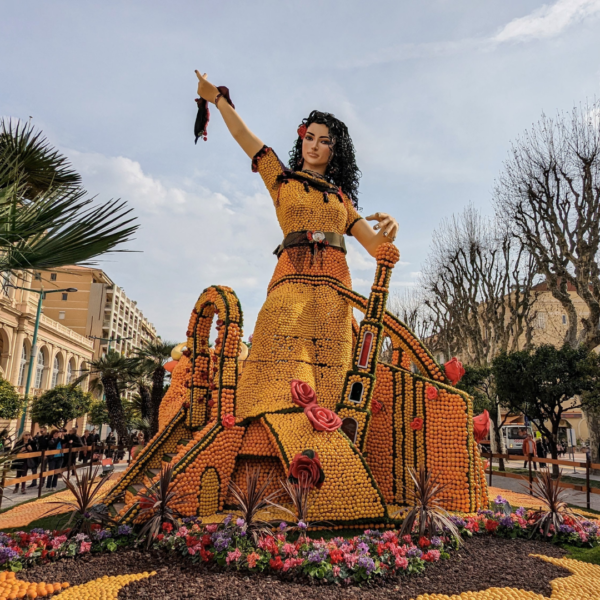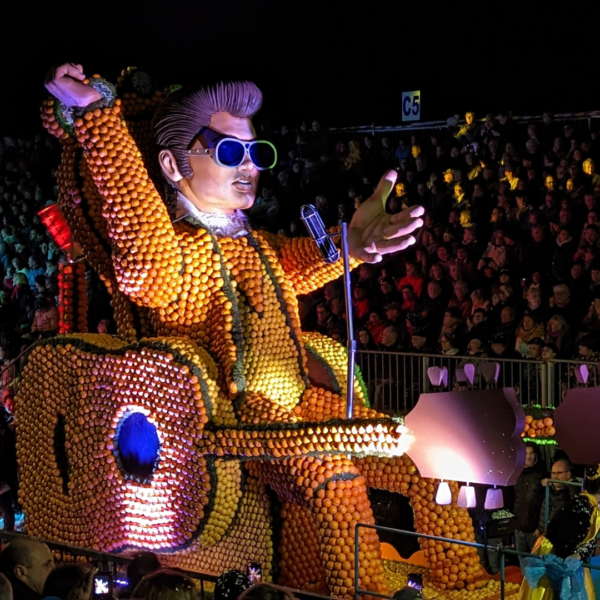Our trip on the Côte d’Azur in winter
La Voyagiste Paris discovered the Côte d’Azur during February, to assist the Nice Carnival and Flowers battle, and also visit the most iconic places like Saint-Paul-de-Vence, Eze, Villefranche-sur-mer, Saint-Jean-Cap-Ferrat, and Menton for the festivities of the lemon.
Through this outstanding travel experience on the Côte d’Azur, we created a journey dedicated to the discovery of the French Riviera for you.
1. We started our stay with a visit to three beautiful villages of the Côte d’Azur: Biot, Saint-Paul-de-Vence and Tourrettes-sur-Loup
Biot, labeled “cities and crafts of art” is a village perched in the Niçois countryside, with many savoir-faire, such as pottery and glassware. From the 16th century Biot became a major place for the production of pottery, then in the 20th century the art of glass, and more particularly bubble glass, developed. Today, many local artists and craftsmen are based in Biot and contribute to the worldwide reputation of this village.
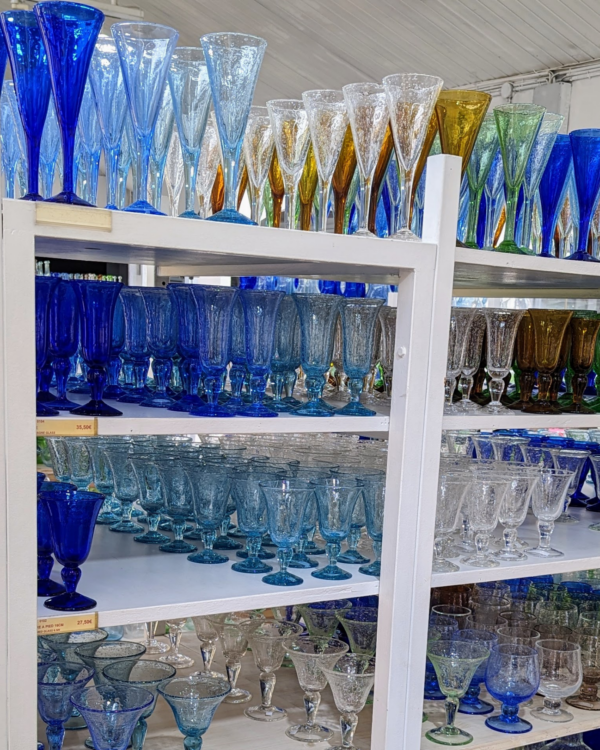

Saint-Paul-de-Vence is a splendid medieval village in the heights of Nice, protected by its ramparts. The village offers picturesque cobbled streets filled with shops, art galleries, and artisans’ workshops. In the 19th and 20th centuries, the village became the stronghold of many artists. Cinema directors, writers, poets, and painters, all drew their inspiration here, attracted by the quietness and the warmth of the village. Marc Chagall and Jacques Prévert are fervent adepts and even settled there. Saint-Paul-de-Vence is a true art of living and an invitation to stroll through its streets in search of a unique work of art or a landscape of the surroundings.
Tourrettes-sur-loup is a medieval village that proudly bears the symbol of the violet. Composed of cobbled and flowered streets on its rocky spur, the village is the refuge of many local artists and craftsmen such as woodcarvers, ceramists, jewelers, etc. Tourrettes-sur-Loup is also the city of violets and cultivates this precious flower to make syrup, candies, candles, etc.
The village offers a gentle way of life and an authentic charm that is pleasant to walk around.
We liked the atmosphere of these villages, the tranquility and sweetness of life that emerges. It was very pleasant to stroll through the pretty streets to discover a panorama or a craftsman’s store. These villages are composed of lovely restaurants to enjoy gastronomic time in a beautiful setting.

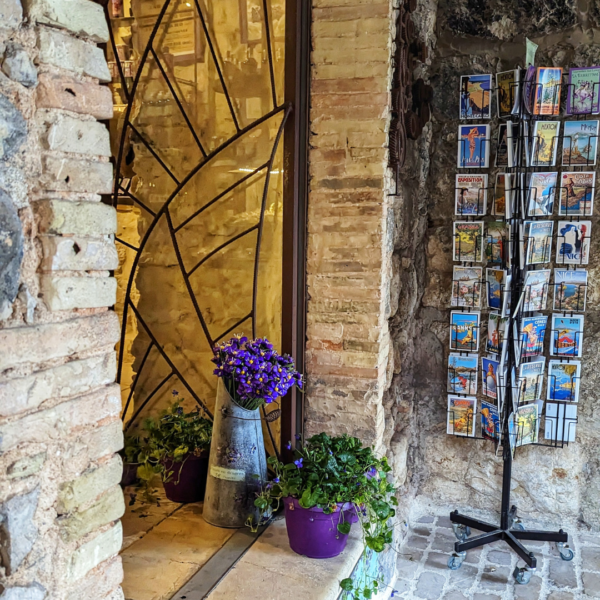
2. We continue our stay in Nice to discover the city but also the festivities that are the carnival of Nice with the parade of corsos and the battle of flowers.
Nice, listed as a UNESCO World Heritage Site, is a beautiful city on the Mediterranean coast with its long English promenade, its historic center, its flower market, and its colorful Belle Epoque buildings. Nice offers a real warmth and sweetness of life on the French Riviera.
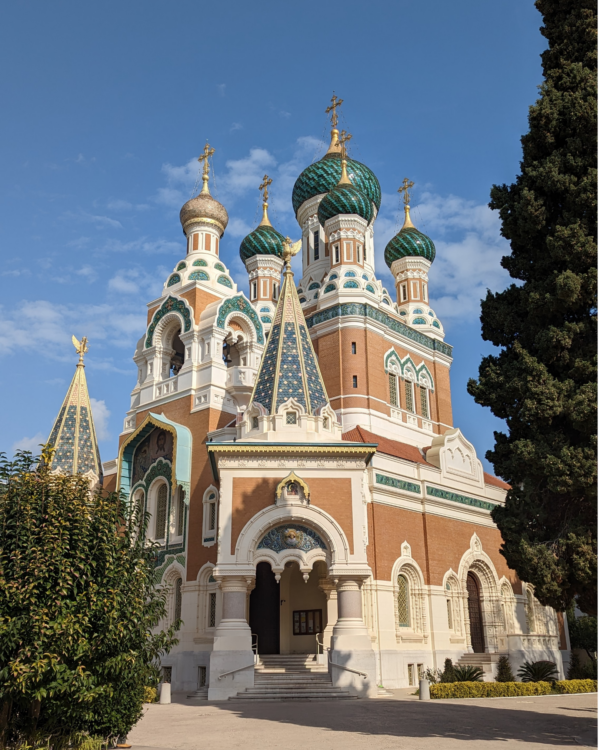
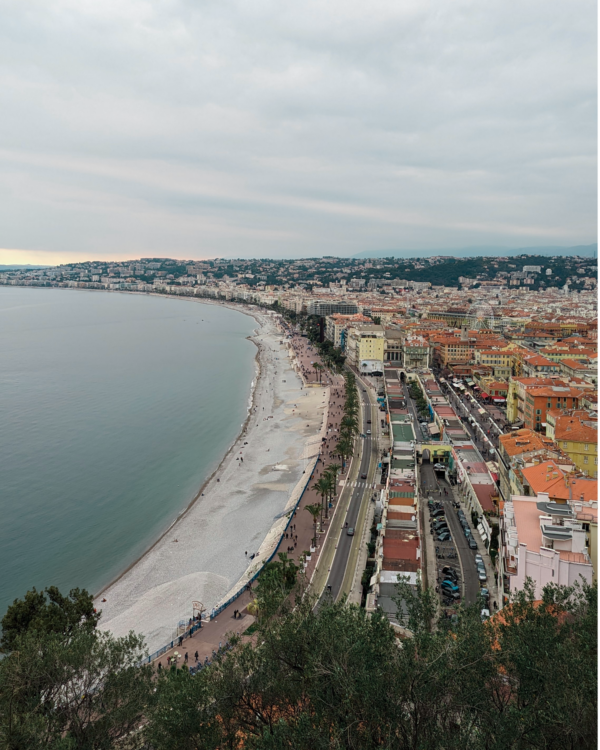

We enjoy the seafood and gastronomy from the south of France, really delicious and full of savor.
The city of Nice has been organizing the Nice Carnival for 150 years, one of the most famous carnivals in the world. The Carnival parades day or night a procession of floats on which rest huge creations several meters high. The opening of the carnival and the parades is always done by his Majesty Carnival who reigns over the carnival during all its duration. The king of the carnival is always followed by the queen and the carnival, and the following floats represent the king’s court and his subjects, inspired by the theme of the year for the creation of the corsos. The procession is accompanied by dancers and costumed troops that advance to the rhythm of the music.
It is an incredible atmosphere that sets the pace for Nice during the carnival, and it is a real delight to discover the parade floats and their creation.
In parallel to the parade of carnival, floats take place in the mythical battle of flowers with a procession of floats in bloom, highlighting the great diversity of flowers in the region. At the end of the parade, the flowers are distributed to the spectators for their greatest happiness.
These festivities are to be done once in a lifetime, as the atmosphere is incredible and magical and allows you to discover Nice differently.
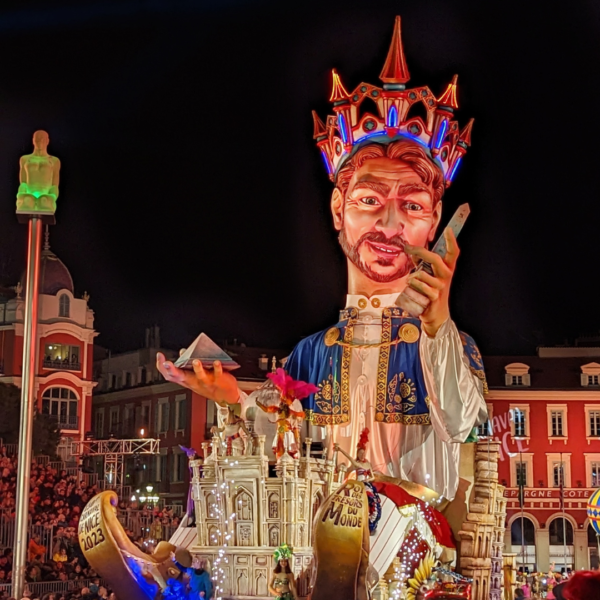

3. We then discover the coast with Villefranche-sur-mer, Beaulieu-sur-mer and Saint-Jean-Cap-Ferrat. 3 pretty and colorful towns with a Mediterranean charm.
Saint-Jean-Cap-Ferrat offers a nice walk around the peninsula, and magnificent villas in the Belle Epoque style, including the Villa Rothschild to visit.
Villefranche-sur-mer is an authentic and colorful city in which it is pleasant to walk around and then have an aperitif on the waterfront at sunset. Villefranche-sur-mer has a large citadel dating from the 16th century and a pretty port. Its bell tower and its church Saint-Michel in the baroque style dating from the 18th century are also worth seeing.
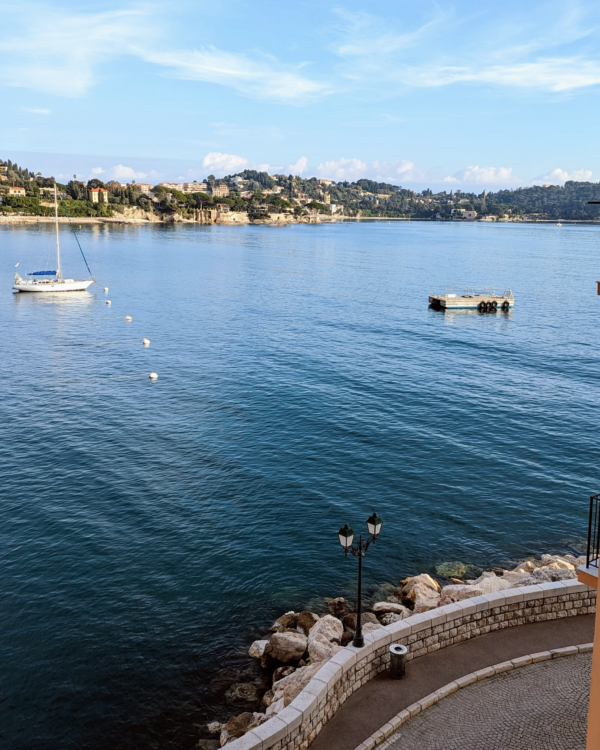

Beaulieu-sur-mer, has a beautiful Belle Epoque architecture and nice panoramas on the sea. To visit the villa Kerylos on the seafront, a palace with Greek inspirations.
Very good restaurants and hotels are spread over these three cities, offering beautiful moments on the French Riviera.

4. We discover the magnificent village of Eze perched on top of a hill and overlooking the Mediterranean
Eze, a medieval village with its stone houses, flowered alleys, and ancestral charm is a real favorite for us.
You have to get lost in its cobbled streets and dare to venture into every corner to discover its wonders.
Its botanical garden filled with many species of cactus and trees gives an exceptional charm to the village and offers a spectacular view from the top of the rocky outcrop.


We choose to do a custom perfume creation workshop with Galimard, one of the oldest perfume houses. With a perfume expert, we create our own fragrance and choose each scent composing the base, top, and heart notes. An incredible experience to teach us this ancestral know-how.
We enjoy a magnificent hotel in Eze, hidden in the village it offers us the most incredible rooms, and its restaurant terrace offers an exceptional panorama.


5. We finish our stay on the French Riviera in Menton, passing before by the medieval village of Roquebrune Cap Martin and La Turbie.
La Turbie is a charming village typical of the French Riviera with its narrow streets, its pretty stone houses, and the legendary Trophée d’Auguste (Augustus’ Trophy) sitting at the top of the village. Inherited from the Roman era, it remains today only reconstituted vestiges giving a considerable charm to the village, and an incredible view from the top.
The village of Roquebrune-Cap-Martin overlooks the Mediterranean from its medieval castle and descends to the waterfront in the modern town. This jewel of the French Riviera is a must-see.

After these two splendid coastal villages, we arrive in Menton, the city of lemons. Nice walk on the Mediterranean coast, visit the colorful city, the citrus garden, and shopping for lemon products. Of course, we taste the lemon specialties of Menton and other dishes of the south of France.
In the evening we enjoy the festivities of the lemon festival, and illuminated corsos parade through the streets of Menton. Large floats made of citrus fruits form creations with a specific theme. This year on the theme Rock and Opera we see Elton John, Johnny Hallyday, etc.. formed in citrus.
We had a lovely time in this last part, between the perched medieval village and colored city, it is a warm atmosphere that reigns in the south of France, and always amazing gastronomic time.
